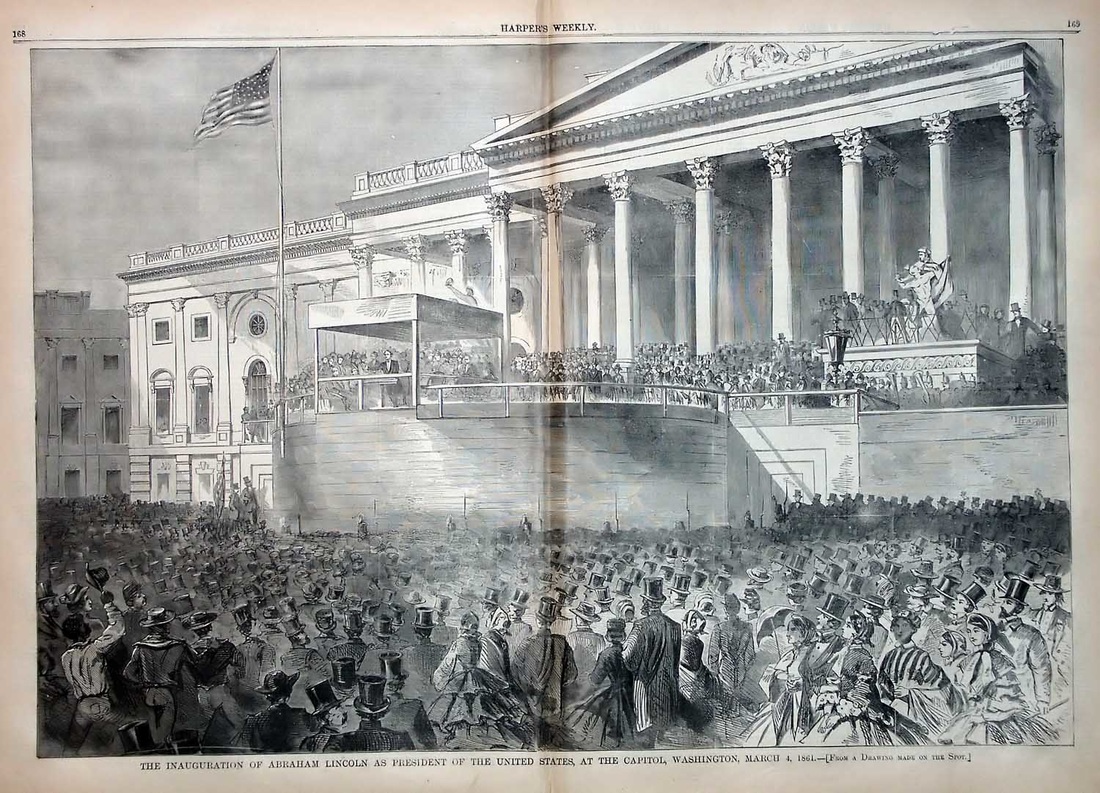“Apprehension seems to exist among the people of the Southern States that by the accession of a Republican administration their property and their peace and personal security are to be endangered. There has never been any reasonable cause for such apprehension.”- Abraham Lincoln, first inaugural address
"Workman had to beg for bread, and apprentices with unpaid and scrabbled in the rubbish for scraps of food. Officials demanded fees for everything from the sheering of white sheep, to the internment of dead bodies. If you wanted to bury your father, you needed seven pitchers of beer and four-hundred and twenty loaves of bread for the undertaker. The tax burden had become so unbearable, that parents were forced to sell their children into slavery in order to pay their debts. - Susan Wise Bauer, History of the Ancient World
“And he that is eight days old shall be circumcised among you, every man child in your generations, he that is born in the house, or bought with money of any stranger, which is not of thy seed..” - King James Bible, Genesis 17:12
Portugal wanted their own little empire, so they decided to attack a North African city named Ceuta and were instantly successful, but spent the next few years defending it, which got expensive. They began looking for other ways to reach the east and so started sailing further and further south, down the western coast of the African Continent.
This had been the furthest south any Christian had ever sailed. At first they didn't find anybody, but once he reached the Azores, they found villages of Moors, or North-African Muslims. They took them and brought them back to Portugal where they sold them off to slavery. They made so much money off of doing that, other explorers began sailing past the Azores to find non-Christians to enslave.
After finding a decent port, sailors would anchor, map the area, then ride horses inland until they found a village of people and kidnapped them - men, woman and children, they didn't give a damn. The African parents would of course freak out and resist, so the Portuguese would take their children onto the ships, giving the parents little choice but to follow them on. Sometimes, rivers were so large, they could take long boats and row inland, happily displacing more families as they advanced. Anyone who resisted seizure was killed in probably the most inhumane ways.
By 1444, six large ships sailed from the Portuguese city of Lagos with the intent of stealing more people, as well as their property, and selling them off. They returned with two hundred and fifty Africans and sold them right on the dock, breaking up many families right then and there: Mothers and fathers who tried to protect their children by following them onto the ships were now trapped on a new continent and would now never see their children again and for the rest of their own lives be forced to live under servitude, because Capitalism.
The Christians to took them thought these native Africans were dirty and living in damnation and that at least as slaves, they would be dressed and civil. In 1452, the King of Portugal asked the Pope to sanction his actions as a crusade, "a holy war on the enemies of the Church". The Pope agreed and released a papal bull called "Dum Diversas" making the perpetual enslavement of non-Christians into law. When others disputed Portugal's Monopoly, the Pope doubled down in 1455 with a papal bull called "Romanus Pontifex".
The French founded New Orleans in 1718 and the same year, the Spanish founded San Antonio and in 1769, San Diego was founded. With the founding of cities in the Spanish frontier, the number of slaves grew. Spanish territories spread as far north as today’s southern United States, and so for generations, African slavery became a main staple of Agricultural life in the South. As England continued planting colonies in the Americas, slavery would spread throughout the Eastern Seaboard. By the time of the American Revolution, most of the Founding Fathers owned slaves.
“It would give to persons of the negro race, who were recognized as citizens in any one State of the Union, the right to enter every other State whenever they pleased, singly or in companies, without pass or passport, and without obstruction, to sojourn there as long as they pleased, to go where they pleased at every hour of the day or night without molestation, unless they committed some violation of law for which a white man would be punished; and it would give them full liberty of speech in public and in private upon all subjects upon which its [a slave State's] own citizens might speak; to hold public meetings upon public affairs, and to keep and carry arms wherever they went. And all of this would be done in the face of the subject race of the same color, both free and slaves, and inevitably producing discontent and insubordination among them, and endangering the peace and safety of the State.”
-Chief Justice Roger B. Taney of the United States Supreme Court, Dred Scott V. Sandford, 1857
.
“Thomas J. (Stonewall) Jackson watched the scene intently, noting that the coffin was a handsome affair of dark walnut, protected by a poplar crate. Brown was conveyed a short distance out of town to an open pasture where his gallows loomed… John Wilkes (Booth) had been awake since dawn, along with the other Richmond Greys. They lined up by height close to the scaffold, no more than 30 feet away, and stood at attention in the rough grass.”
“Booth watched Brown scan the tree-line hemming the field. No mob armed with hand grenades made its appearance. The surrounding forest was undisturbed. Watching comprehension dawn on Brown’s face, John Wilkes later said he felt ‘a throb of anguish in his chest’. ‘He was a brave old man’, John Wilkes told Asa, ‘his heart must have broken when he felt himself deserted’. Brown may have been a villain and a vigilante, but John Wilkes could not help honoring the man for his courage.”
“His arms below the elbows flew up horizontally. His hands clenched, and his arms gradually fell, but by spasmodic motions. Only then did a strong wind blow the lifeless body to and fro.”
“We are not enemies, but friends. We must not be enemies. Though passion may have strained it must not break our bonds of affection.”
“The new constitution has put at rest, forever, all the agitating questions relating to our peculiar institution African slavery as it exists amongst us the proper status of the negro in our form of civilization. This was the immediate cause of the late rupture and present revolution. Jefferson in his forecast, had anticipated this, as the “rock upon which the old Union would split.” He was right. What was conjecture with him, is now a realized fact… The prevailing ideas entertained by him and most of the leading statesmen at the time of the formation of the old constitution, were that the enslavement of the African was in violation of the laws of nature… Our new government is founded upon exactly the opposite idea; its foundations are laid, its corner- stone rests, upon the great truth that the negro is not equal to the white man; that slavery subordination to the superior race is his natural and normal condition. This, our new government, is the first, in the history of the world, based upon this great physical, philosophical, and moral truth. This truth has been slow in the process of its development, like all other truths in the various departments of science.”


 RSS Feed
RSS Feed